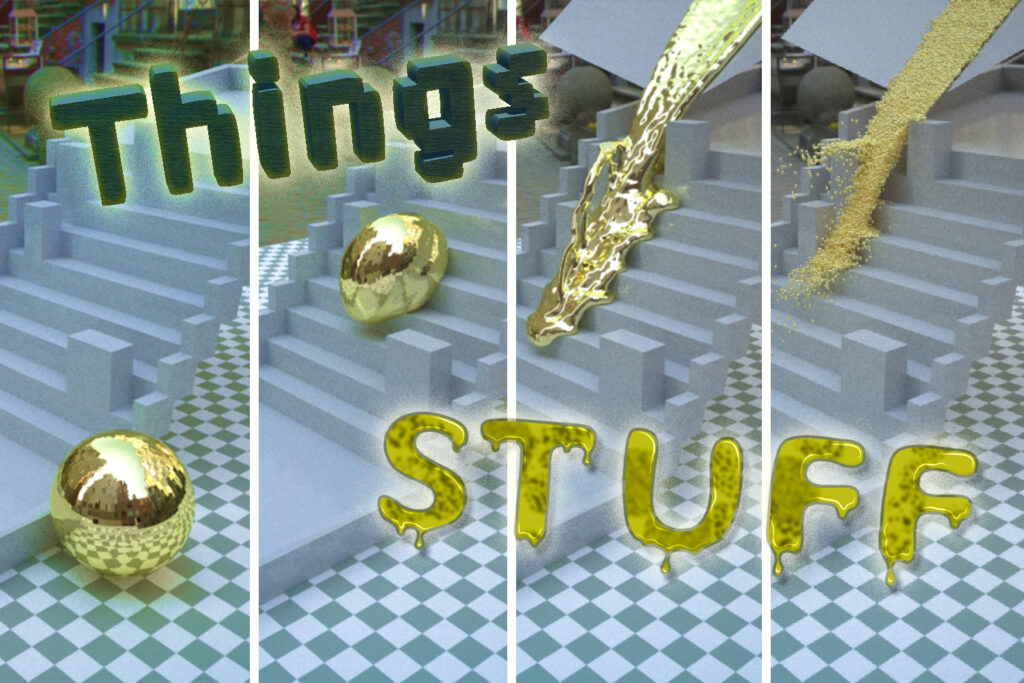
In a groundbreaking study published today in the journal Current Biology, researchers from the Massachusetts Institute of Technology (MIT) have unveiled how the human brain distinguishes between fluids and solid objects. The study, led by Vivian Paulun, a postdoctoral researcher soon joining the University of Wisconsin at Madison, sheds light on the brain’s ability to process different types of physical materials.
The research team, including MIT postdoc RT Pramod and Professor Josh Tenenbaum, discovered that distinct areas of the brain’s visual cortex are activated when viewing “things” like rigid objects compared to “stuff” such as liquids or granular materials. This distinction, previously unseen in the brain, suggests specialized brain regions are dedicated to interpreting these materials.
Understanding the Brain’s Visual Processing
Decades of brain imaging studies have mapped out the brain’s ventral visual pathway, known for recognizing the shapes of three-dimensional objects, including the lateral occipital complex (LOC). Meanwhile, the dorsal visual pathway, particularly the frontoparietal physics network (FPN), analyzes the physical properties of materials like mass and stability.
However, most of these studies have focused on solid objects. “Nobody has asked how we perceive what we call ‘stuff’ – that is, liquids or sand, honey, water, all sorts of gooey things,” Paulun explains. The new research addresses this gap, exploring how these materials, which flow rather than bounce, are processed by the brain.
Experimental Approach and Findings
To investigate, Paulun and her team created over 100 video clips using a software program for visual effects artists. These clips depicted various interactions of “things” and “stuff” with the environment, such as sloshing inside a box or flowing down stairs. Functional magnetic resonance imaging (fMRI) was used to scan participants’ visual cortex as they watched these videos.
The results revealed that both the LOC and FPN respond to “things” and “stuff,” but each pathway contains subregions that are more responsive to one category over the other. “Both the ventral and the dorsal visual pathway seem to have this subdivision, with one part responding more strongly to ‘things,’ and the other responding more strongly to ‘stuff,'” Paulun notes.
“This is the first time that it’s been really mapped onto separate cortical structures in the brain,” says Roland Fleming, a professor of experimental psychology at Justus Liebig University of Geissen, who was not involved in the study. “Now we can investigate the different computations that the distinct brain regions use to process and represent objects and materials.”
Implications for Cognitive Neuroscience
The study’s findings suggest that the brain may employ separate computational processes for representing and simulating “stuff” and “things,” akin to artificial physics engines used in video games. These engines typically represent solid objects as meshes, while fluids are depicted as rearrangeable particles.
“The interesting hypothesis that we can draw from this is that maybe the brain, similar to artificial game engines, has separate computations for representing and simulating ‘stuff’ and ‘things.’ And that would be something to test in the future,” Paulun suggests.
Future Research Directions
Looking ahead, the researchers plan to explore whether the brain areas involved in processing rigid objects are also active when planning to grasp objects. They also aim to investigate if specific regions within the FPN correlate with processing features like the viscosity of liquids or the bounciness of objects.
Additionally, the team intends to study how the brain represents changes in the shape of fluids and deformable substances within the LOC. These efforts could further unravel the complex computations the brain uses to interact with the physical world.
The research was supported by the German Research Foundation, the U.S. National Institutes of Health, and a U.S. National Science Foundation grant to the Center for Brains, Minds, and Machines. As this field of study advances, it promises to deepen our understanding of cognitive neuroscience and the brain’s intricate processing capabilities.






